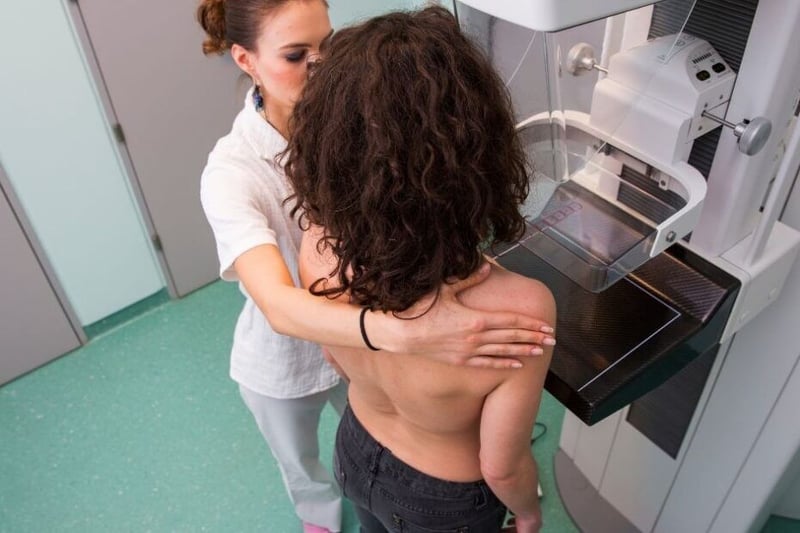
Introduction
Mammograms are a crucial diagnostic tool in the detection of breast cancer. They are commonly used to screen for abnormalities in breast tissue, but many individuals wonder: does a mammogram confirm cancer? In this blog, we will explore the role of mammograms in diagnosing breast cancer and the steps involved in confirming a breast cancer diagnosis.
The Purpose of a Mammogram
Mammograms are X-ray images of the breast tissue. They are primarily used for two purposes:
- Breast Cancer Screening: Mammograms are used for routine screenings in women with no symptoms to detect breast cancer at an early, more treatable stage. Regular screening mammograms can identify abnormalities that may be indicative of cancer.
- Diagnostic Mammograms: When a woman experiences breast symptoms such as a lump, pain, or changes in breast appearance, a diagnostic mammogram is performed. This type of mammogram is more focused and aims to provide detailed images of the area of concern. Learn more about mammograms here.
What a Mammogram Reveals
A mammogram can reveal several types of breast abnormalities, including:
- Benign Tumors: Mammograms can detect benign (non-cancerous) tumors or growths in the breast tissue. These are usually harmless but may require further evaluation.
- Calcifications: Tiny calcium deposits in the breast tissue can appear on mammograms. Most calcifications are non-cancerous, but certain patterns may require additional testing.
- Cysts: Fluid-filled sacs in the breast tissue can be seen on mammograms. Cysts are typically benign and may not require treatment.
- Masses or Tumors: Mammograms can identify masses or tumors in the breast tissue. While these findings raise concerns, they do not confirm cancer. Further tests are needed to determine if a mass is cancerous.
Confirming a Cancer Diagnosis
Mammograms alone do not confirm cancer. When a mammogram shows an abnormality that raises suspicion, further diagnostic tests are conducted to confirm or rule out cancer. These tests may include:
- Biopsy: A biopsy involves removing a small sample of tissue from the breast for laboratory analysis. This is the definitive way to confirm whether a mass is cancerous.
- Ultrasound: An ultrasound may be used to evaluate breast abnormalities further. It can help determine if a mass is solid or fluid-filled.
- MRI: In some cases, magnetic resonance imaging (MRI) is used to obtain detailed images of the breast tissue and evaluate the extent of abnormalities.
- Clinical Evaluation: A healthcare provider will consider the mammogram results, the patient’s medical history, and physical examination findings when deciding on further steps.
Conclusion
In summary, a mammogram is a valuable tool for detecting breast abnormalities, but it does not confirm cancer. It serves as an initial step in the diagnostic process. If a mammogram reveals an abnormality, additional tests such as biopsies, ultrasounds, or MRIs are performed to determine whether the abnormality is cancerous. Early detection through mammography remains crucial in improving the chances of successful breast cancer treatment. Women are encouraged to follow their healthcare provider’s recommendations for breast cancer screenings based on their age, risk factors, and medical history. Visit https://parklaneradiology.co.za/womens-imaging for more info.
Top Click is one of South Africa’s leading full-service digital marketing agencies. Our custom-built, cutting-edge solutions are targeted to help you attract customers, convert leads and grow your business. From SEO and Google Ads to social media marketing and digital design, our measurable marketing campaigns deliver results – and ensure that, in a cluttered online marketplace, you rise above the rest.
Latest from
- Choosing the Right Pet Food for Your Animals
- Managing Contracts With Simpler Tools
- New Website to Keep Up with the Demand for Online Pet Food Delivery in South Africa
- Machines That Make Packaging Easier
- The Role of Transit Solutions in Modern Connectivity
- How to Get Cheaper Car Insurance Without the Stress
- Making Radiology Workflows Simpler with the Right Tools
- Reduce Late Payments with These Practical Tips
- A Simple Guide to Choosing the Right Forklift for Your Business
- Keeping Your Car in Good Shape with the Right Services
- Why Property and Asset Valuations Matter
- Finding Quality Engines and Scrap Yard Services
- Practical Guide to Rooftop Tents
- Practical Uses of Vehicle Awnings
- A Look at Engine Choices Across Popular Car Brands
The Pulse Latest Articles
- Pap & Chakalaka: A Johannesburg Heritage Story (September 8, 2025)
- Rainbow Chicken Puts South African Gogos On Centre Stage (September 5, 2025)
- The Impact Of Collaboration, Compassion, And Connection - Lefika La Ka And Pata (September 5, 2025)
- Step Into The Future Of Showering: Where Elegance Meets Efficiency (September 3, 2025)
- Rainbow Chicken Champions Heart Health With New Farmer Brown Nourish Range (September 3, 2025)
